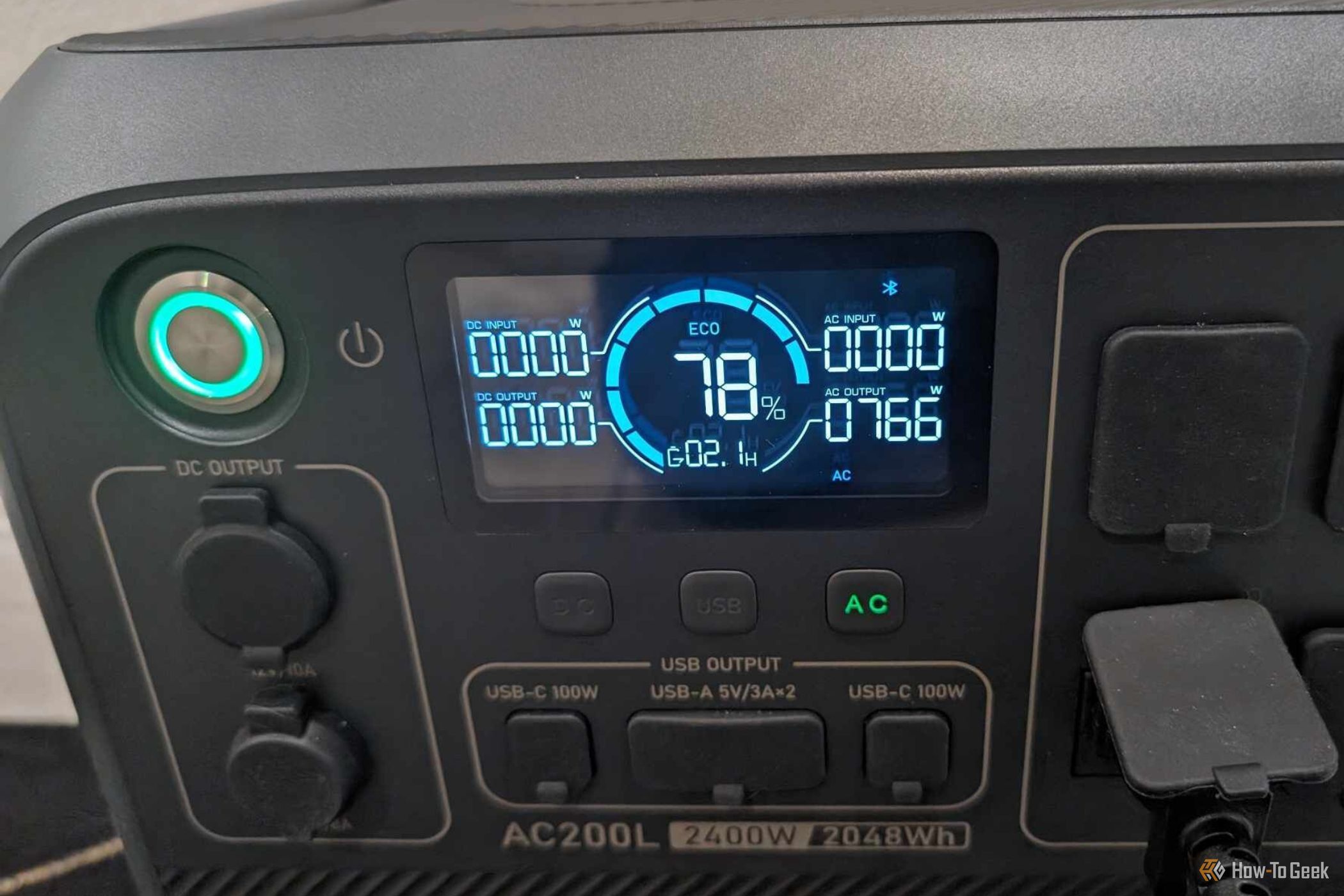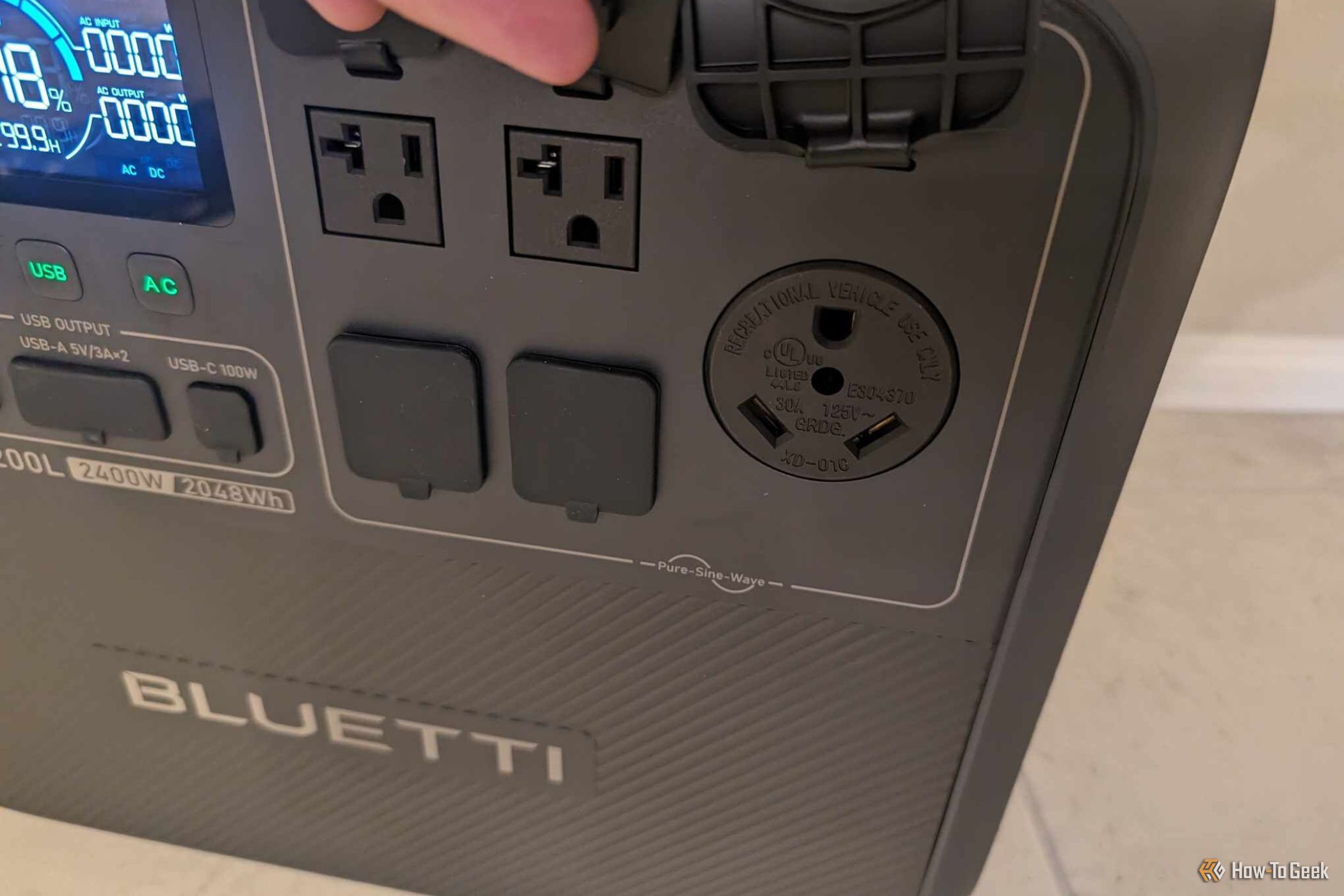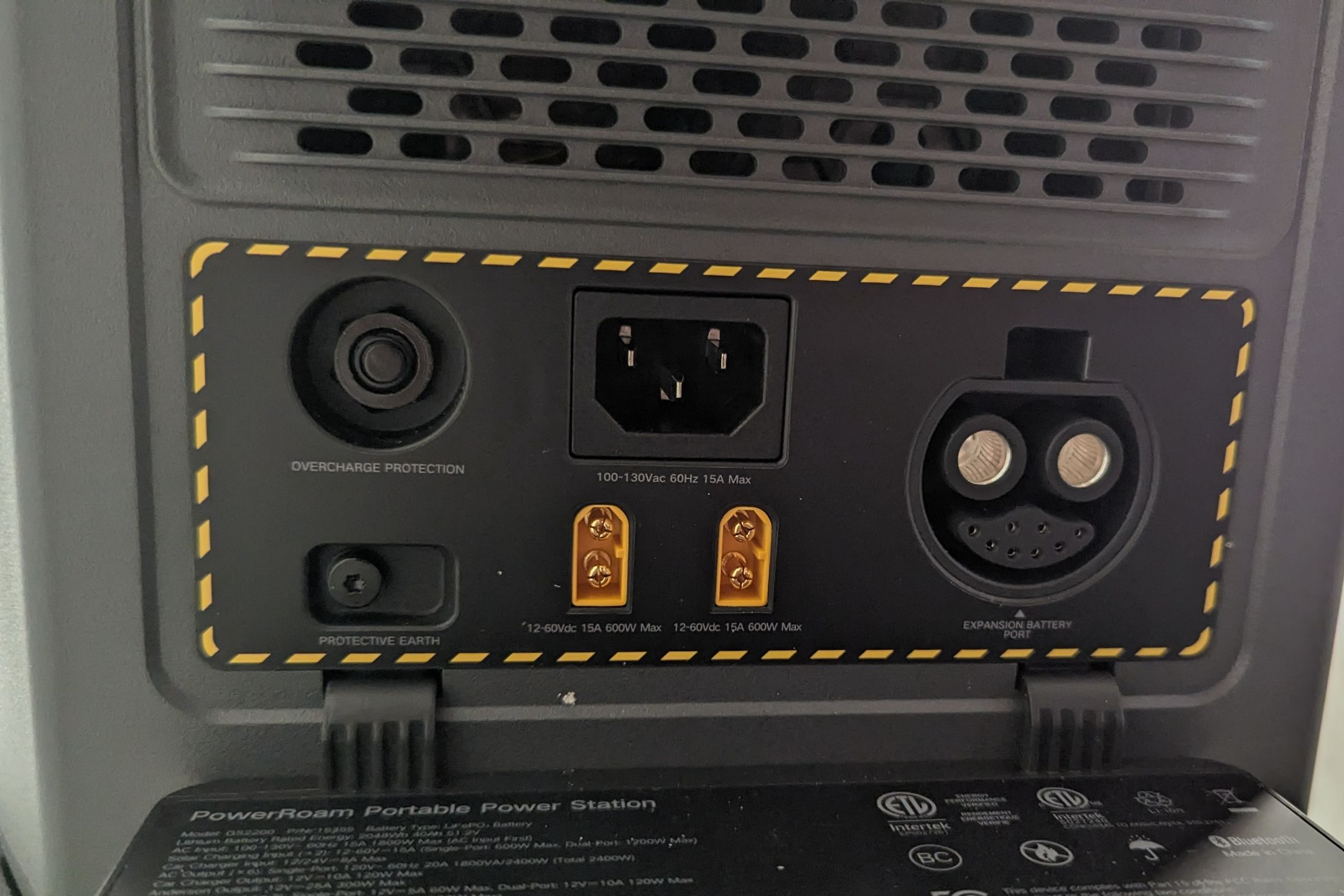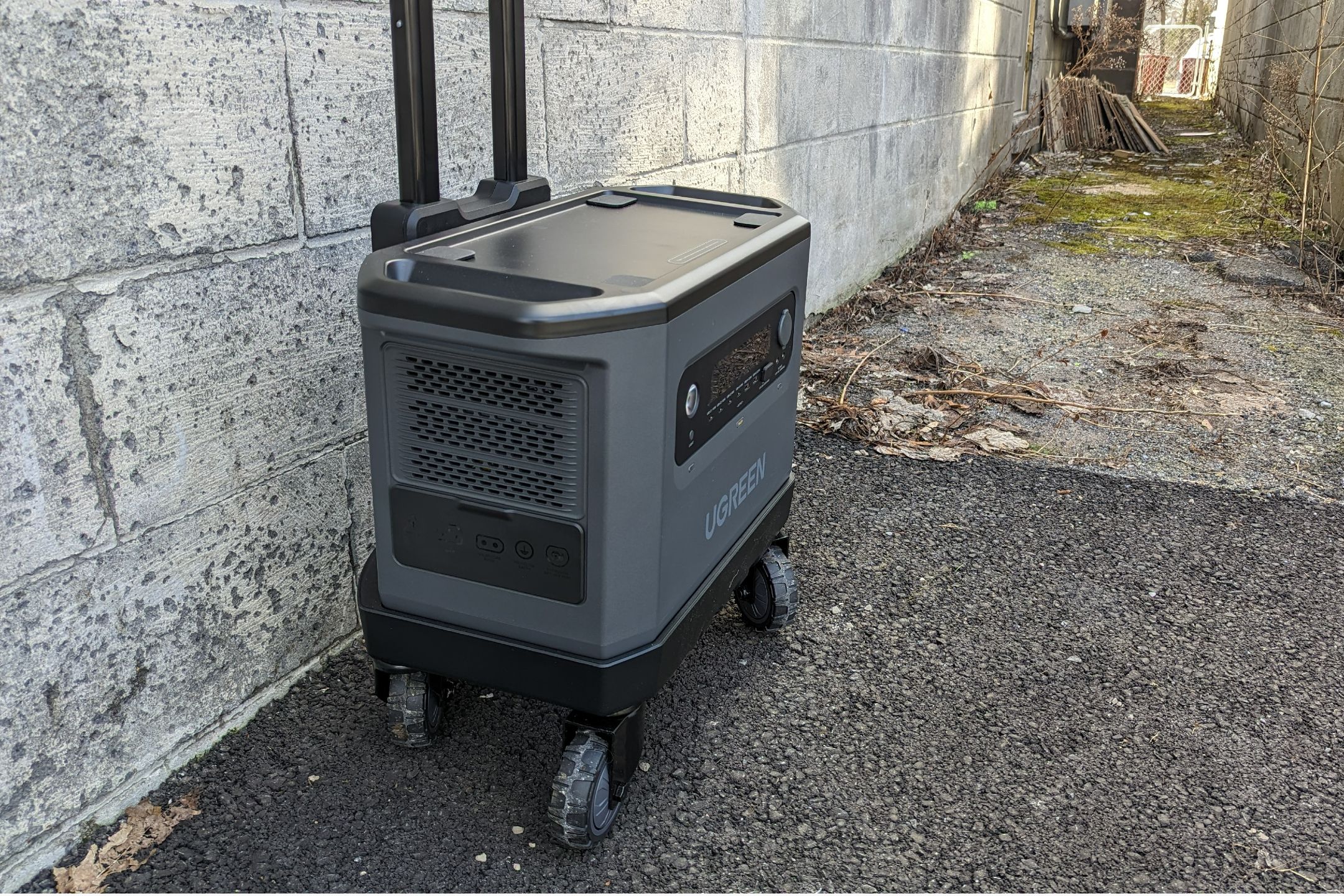Key Takeaways
- A power station’s battery capacity can help you determine for how long it’ll power your devices.
- Power output is crucial for assessing whether a power station is suitable for your needs.
- You should also look at output options to ensure it has all the outlets and ports for your requirements.
Whether you want power backup for outages or need portable power for camping or tailgating, a power station is an essential purchase. However, with tons of options available, it’s crucial that you understand the key factors in your decision.
What Is a Power Station?
A power station is a large rechargeable battery pack with multiple outputs, including AC outlets, USB charging, and DC ports. Think of it as a very large power bank. You can typically recharge it using AC power, solar panels, USB Power Delivery (USB PD), or your car’s 12V outlet.
While larger power stations are increasingly being used for home power backup, portable options are frequently used during power emergencies and outdoor adventures.
These are not just alternatives to gas-guzzling generators. Power stations, while not as powerful, offer a host of advantages. They operate silently, emit no emissions, and require no maintenance. With a higher capacity battery and output, they can power many household appliances and some heavy-duty tools, providing a reliable and safe power source.
Battery Capacity Is Most Important
Battery capacity is the most crucial consideration while shopping for a power station because it directly governs how long the connected devices will run on a single charge. Power stations typically mention the battery capacity in watt-hours (Wh), which, simply put, is the number of watts the battery could produce in an hour. So, for example, a 1000Wh battery could theoretically offer 1000Wh for an hour. However, that doesn’t mean the power station can actually produce that much power. For example, a station might have 1000Wh of capacity, but produce only 500W of peak power, which would deplete the battery in two hours.
When selecting a power station, it’s critical to consider your expected power consumption and the duration of the backup you require.
Notably, some power stations support expandable battery storage. This means that if your power requirements increase in the future, you can purchase additional battery packs and connect them to your existing power station, effectively increasing its capacity and runtime.
Power Output Impacts What You Can Run
As I mentioned above, you’ll want to ensure a power station can output enough power to fulfill your needs. Whether you’re looking to power a single device or multiple electronics simultaneously, it should deliver enough power to run everything.
The output of a power station is mentioned in watts, and you should confirm if it’s enough to run your devices. You can add up the power consumption mentioned on the various devices that you’re planning to run to get an idea of how much power output you’ll need from your power station.
Besides the typical power output, many power stations also have surge or peak power output. This is the maximum power a power station can deliver for a short period, usually a few seconds. It’s particularly useful for devices that draw higher power during startup or heavy usage, like a refrigerator or power tools.
Output Options Matter
Power stations typically feature a mix of AC outlets, DC outlets, and USB ports. You can use the AC outlets to run anything that runs on AC power and is within the station’s power output levels. That is, as long as the power station offers pure sine power. Some cheap inverters only offer a simulated AC sine wave, which can damage AC motors in power tools, for example.
DC ports are useful for powering car accessories like tire inflators, car coolers, fans, and more. Similarly, USB ports are perfect for charging mobile devices and other gadgets that run off USB power. It’s more efficient to use these DC outputs where possible, rather than converting DC to AC and then back to DC current again by plugging your device chargers into the AC outlets.
Not all power stations offer an equal number of output options. Therefore, it’s vital to ensure that your power station has sufficient outputs to meet your needs. The presence of multiple outputs not only increases a power station’s versatility but also ensures that it can power multiple devices.
While it’s becoming quite common for power stations to feature USB-C ports and support up to 100W power delivery, it’s wise to confirm this if you want to fast charge your supported phone or laptop and don’t want to block one of the AC outlets.
Qi charging support is also becoming somewhat common on modern power stations. But it’s not a very efficient way of charging your phone or wireless earbuds, especially when you have limited power. So, don’t pay too much value to the presence of a Qi charging spot on a power station.
Again, a pure sine-wave output is crucial for safely running appliances with a powerful motor or critical devices such as a CPAP machine. A pure sine-wave output provides a clean and stable power supply, which is essential for sensitive electronics and appliances.
Consider How You’ll Charge It
Most power stations offer the convenience of multiple charging modes, providing you with the flexibility to charge them using your standard AC outlet, your car’s DC outlet, solar, or using a wall USB charger. As you can expect, direct AC charging is typically the fastest. But depending on your solar setup and the power station’s solar input support, you can also charge the power station using solar power in a reasonably good time, and it’ll undoubtedly come in handy if you’re often off-the-grid.
Depending on how you plan to top it up, confirm that the power station you buy supports the same mode. Fast charging is also becoming quite common, and it’s an excellent feature to have, especially when you need to juice up the power station quickly in a pinch.
Different Battery Types Have Different Advantages
While you can build a cheaper backup solution using lead-acid batteries or buy a power station featuring them, it’s usually better to go for a power station with lithium-ion (Li-ion) or lithium iron phosphate (LFP) batteries.
One of the reasons for this is the high energy density of lithium-based batteries, which means they can store more energy in a smaller and lighter package, making them more efficient and compact. Additionally, they have a longer lifespan and need no maintenance.
You will primarily encounter NMC (nickel manganese cobalt), a type of Li-ion battery, or LFP battery, in power stations. While NMC and LFP batteries have many of the same advantages, the LFP batteries are safer, have a slightly longer lifespan, and perform better than the NMC batteries at high temperatures.
Do You Want Portability?
Although you may not need your power station to be portable for home backup, it’s a significant consideration if you plan to carry it around for camping, hiking, tailgating, and beach trips. Portability enhances the device’s versatility and convenience. If your power station is portable, you can also easily move it to a different location in an emergency.
The weight and size of a power station typically increase with the increase in battery capacity. Even so, some manufacturers add wheels, handles, and other features to make the bigger power stations relatively more portable. Still, it’s a good idea to balance battery capacity and portability for ease of use.
Assess Your Needs and Shop Accordingly
Power stations are versatile devices, but which is more suitable depends significantly on your use case. So, assess your requirements and then look for specifics while shopping. As modern power stations can easily last for years and can be a significant investment depending on the battery capacity, anticipating your needs and ensuring those are fulfilled is paramount.
Now that you know what to look for in a power station, we have some excellent recommendations for your power station purchase.








